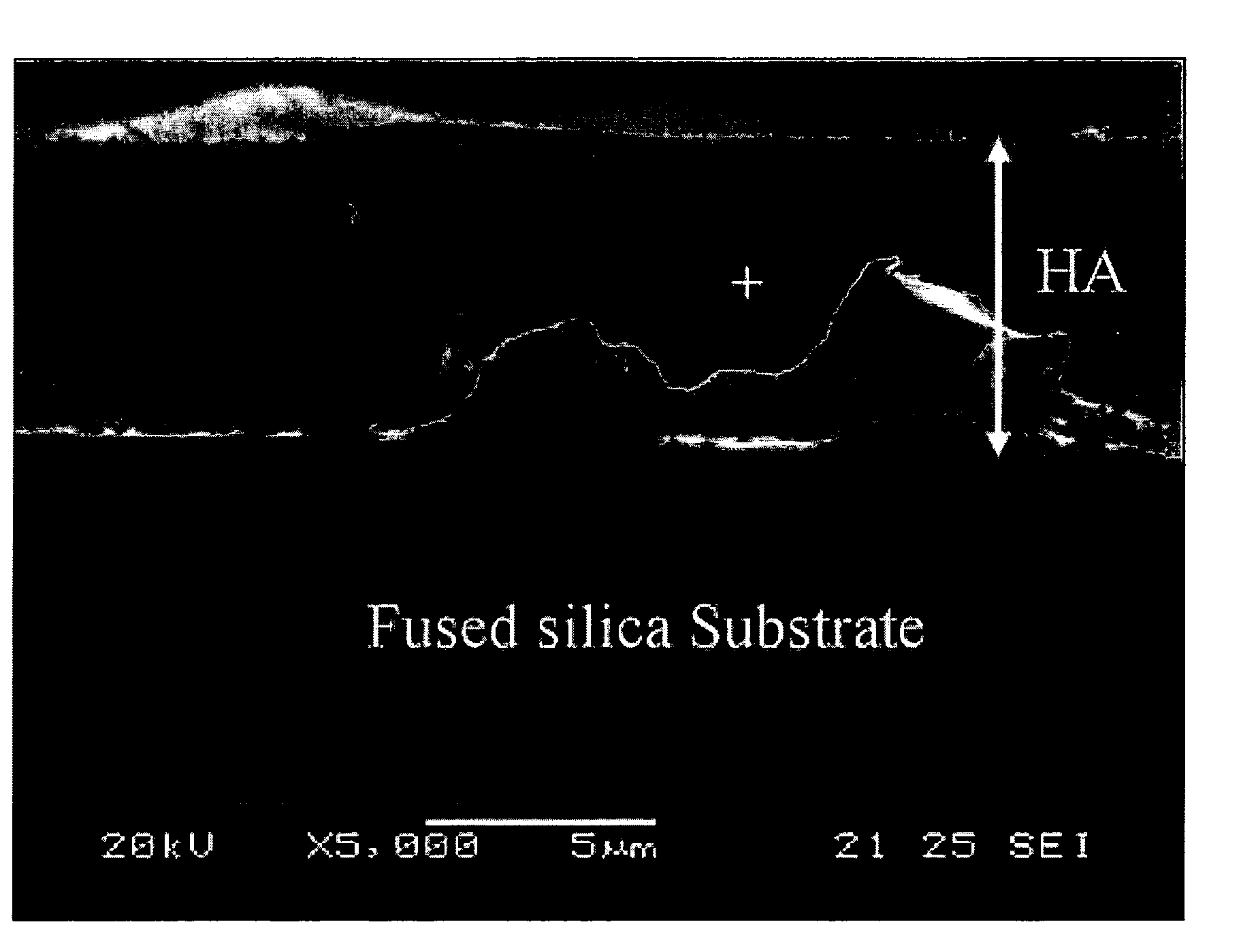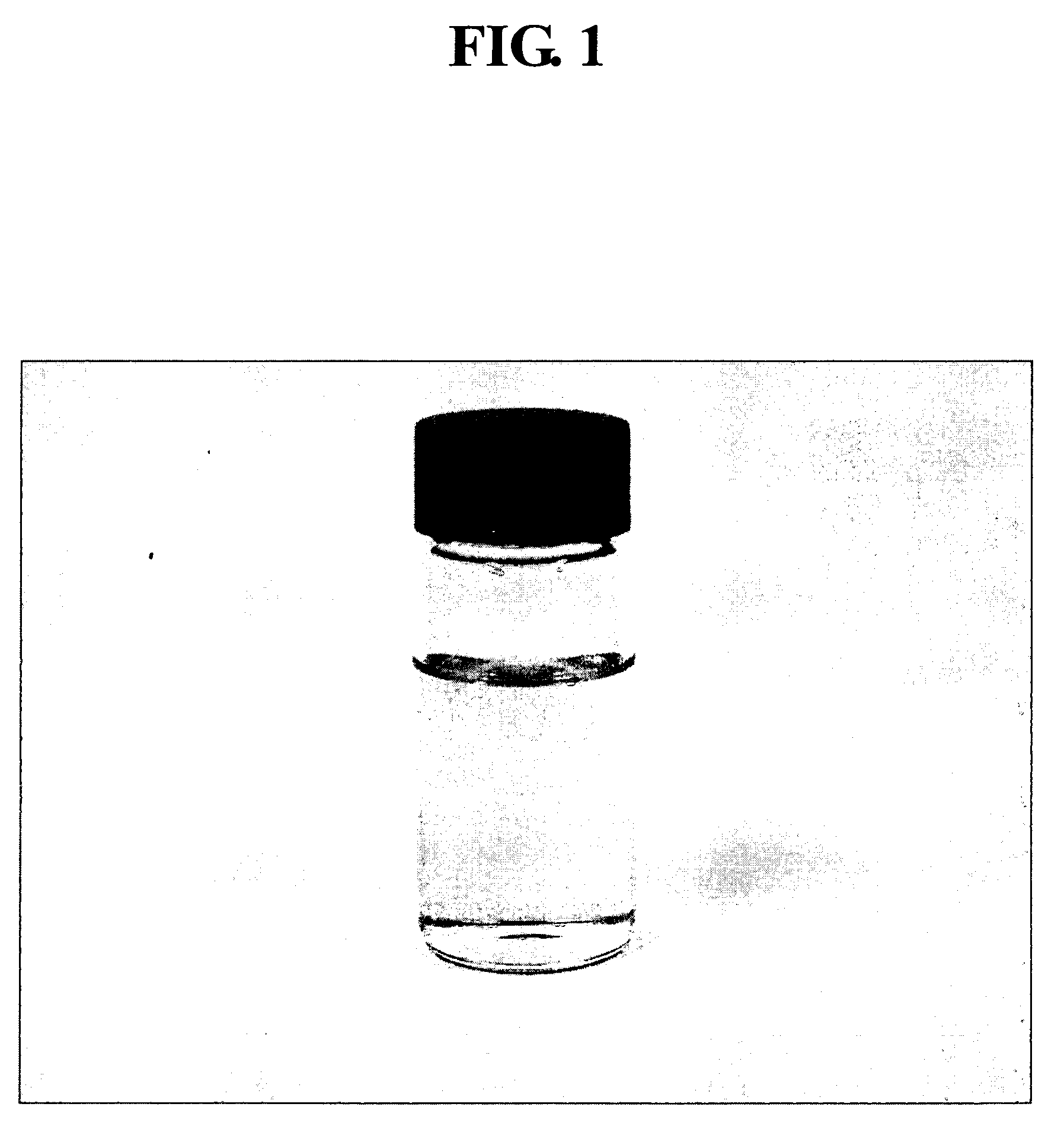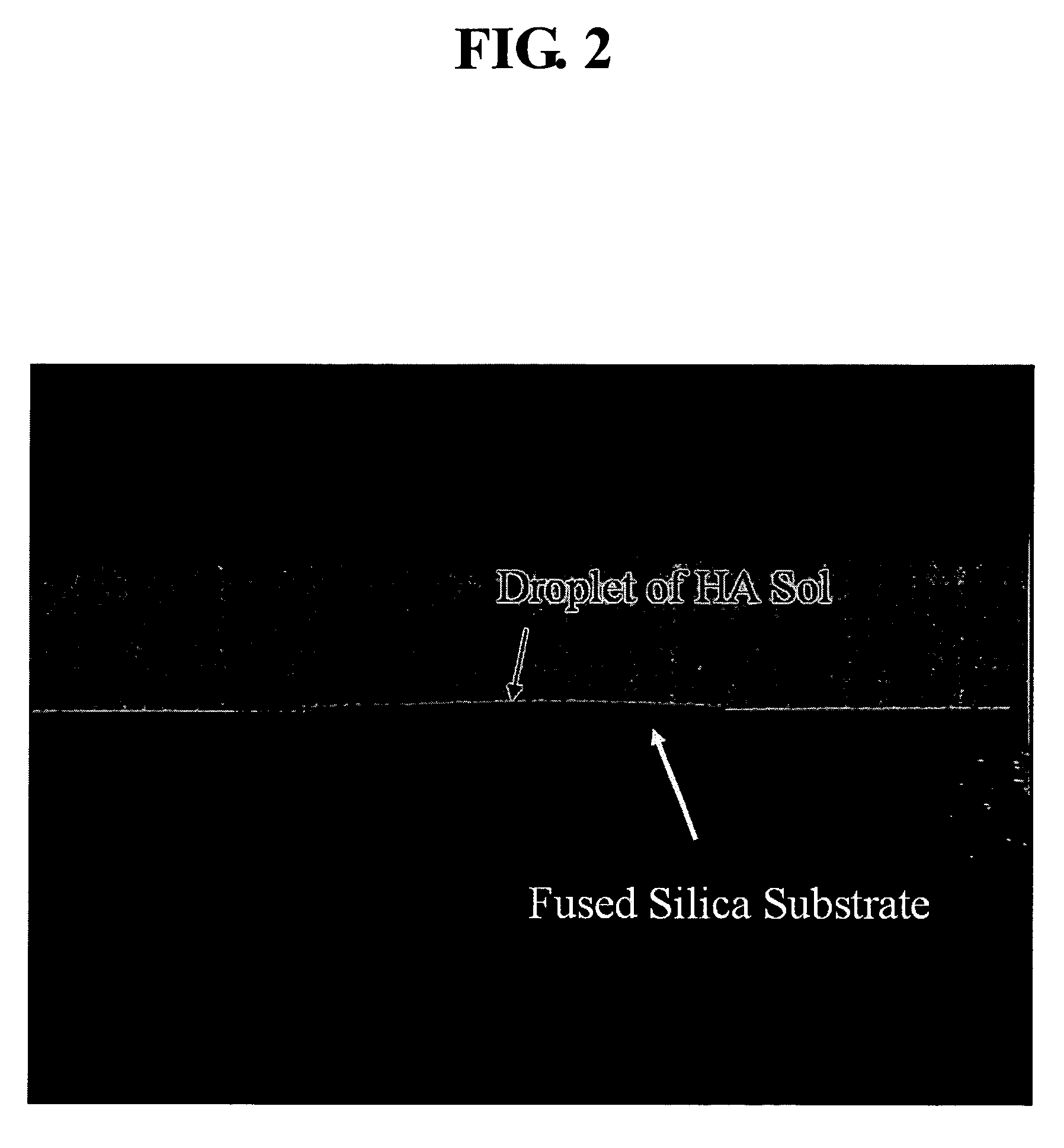Method for producing polymeric sol of calcium phosphate compound and method for coating the same on a metal implant
a technology of calcium phosphate and polymer sol, which is applied in the direction of packaging foodstuffs, packaging goods, impression caps, etc., can solve the problems of reducing the strength of the coated layer, dissociating the coated layer from the target substrate, and reducing so as to achieve excellent bonding strength of the polymeric sol and the metal implant, and reduce the physical strength of the metal implant. , the effect of oxidizing the metal implan
- Summary
- Abstract
- Description
- Claims
- Application Information
AI Technical Summary
Benefits of technology
Problems solved by technology
Method used
Image
Examples
examples 2 and 3
[0051]Calcium ethoxide was dissolved in 5 cc of acetic acid (example 2) and 5 cc of formic acid (example 3) in a glove box, in which a dried argon gas was charged, to produce two solution A samples each containing 0.25 M of calcium ethoxide. Additionally, triethyl phosphite was added into 5 cc of acetic acid (example 2) and 5 cc of formic acid (example 3) to produce two solution B samples. At this time, an amount of triethyl phosphite was properly controlled such that a molar ratio of calcium to phosphorus was 1.67 when the solution A samples were mixed with the solution B samples. The solution B samples were then slowly poured into the solution A samples, respectively, and sufficiently agitated for ten minutes. After the completion of agitation, the formation of precipitates in the resulting mixed solutions and wettability of the resulting mixed solutions were observed, and the results are described in the following Table 2.
[0052]
TABLE 2Example 2Example 3Calcium saltCalcium ethoxid...
examples 4 to 9
[0054]Calcium ethoxide was dissolved in 5 cc of propionic acid in a glove box, in which a dried argon gas was charged, to produce a plurality of solution A samples each containing 0.3 M, 0.5 M, 1.0 M, and 1.2 M of calcium ethoxide (examples 4 to 7). Additionally, triethyl phosphite was added into 5 cc of propionic acid to produce a plurality of solution B samples. At this time, an amount of triethyl phosphite was properly controlled such that a molar ratio of calcium to phosphorus was 1.67 when the solution A samples were mixed with the solution B samples. The solution B samples were then slowly poured into the solution A samples, respectively, and sufficiently agitated for ten minutes. After the completion of agitation, the formation of precipitates in the resulting mixed solutions and wettabilities of the resulting mixed solutions were observed, and the results are described in the following Table 3.
[0055]
TABLE 3Ex. 4Co. Ex. 5Co. Ex. 6Co. Ex. 7Calcium saltCalciumCalciumCalciumCalc...
examples 10 to 14
[0057]Calcium ethoxide was dissolved in 5 cc of propionic acid in a glove box, in which a dried argon gas was charged, to produce a solution A sample containing 0.25 M of calcium ethoxide. Additionally, triethyl phosphite was added into 5 cc of propionic acid to produce a solution B sample. At this time, an amount of triethyl phosphite was properly controlled such that a molar ratio of calcium to phosphorus was 1.67 when the solution A sample was mixed with the solution B sample. The solution B sample was then slowly poured into the solution A sample, and sufficiently agitated at room temperature for ten minutes.
[0058]The resulting mixed solutions were heated from the room temperature to target temperatures (room temperature, 40° C., 60° C., 80° C., and 90° C.: examples 10 to 14) in ten minutes, and then aged at the target temperatures. The formation of precipitates in the resulting mixed solutions was observed, and the results are described in the following Table 4.
[0059]
TABLE 4Ex....
PUM
| Property | Measurement | Unit |
|---|---|---|
| molar ratio | aaaaa | aaaaa |
| temperature | aaaaa | aaaaa |
| temperature | aaaaa | aaaaa |
Abstract
Description
Claims
Application Information
 Login to View More
Login to View More - R&D
- Intellectual Property
- Life Sciences
- Materials
- Tech Scout
- Unparalleled Data Quality
- Higher Quality Content
- 60% Fewer Hallucinations
Browse by: Latest US Patents, China's latest patents, Technical Efficacy Thesaurus, Application Domain, Technology Topic, Popular Technical Reports.
© 2025 PatSnap. All rights reserved.Legal|Privacy policy|Modern Slavery Act Transparency Statement|Sitemap|About US| Contact US: help@patsnap.com



